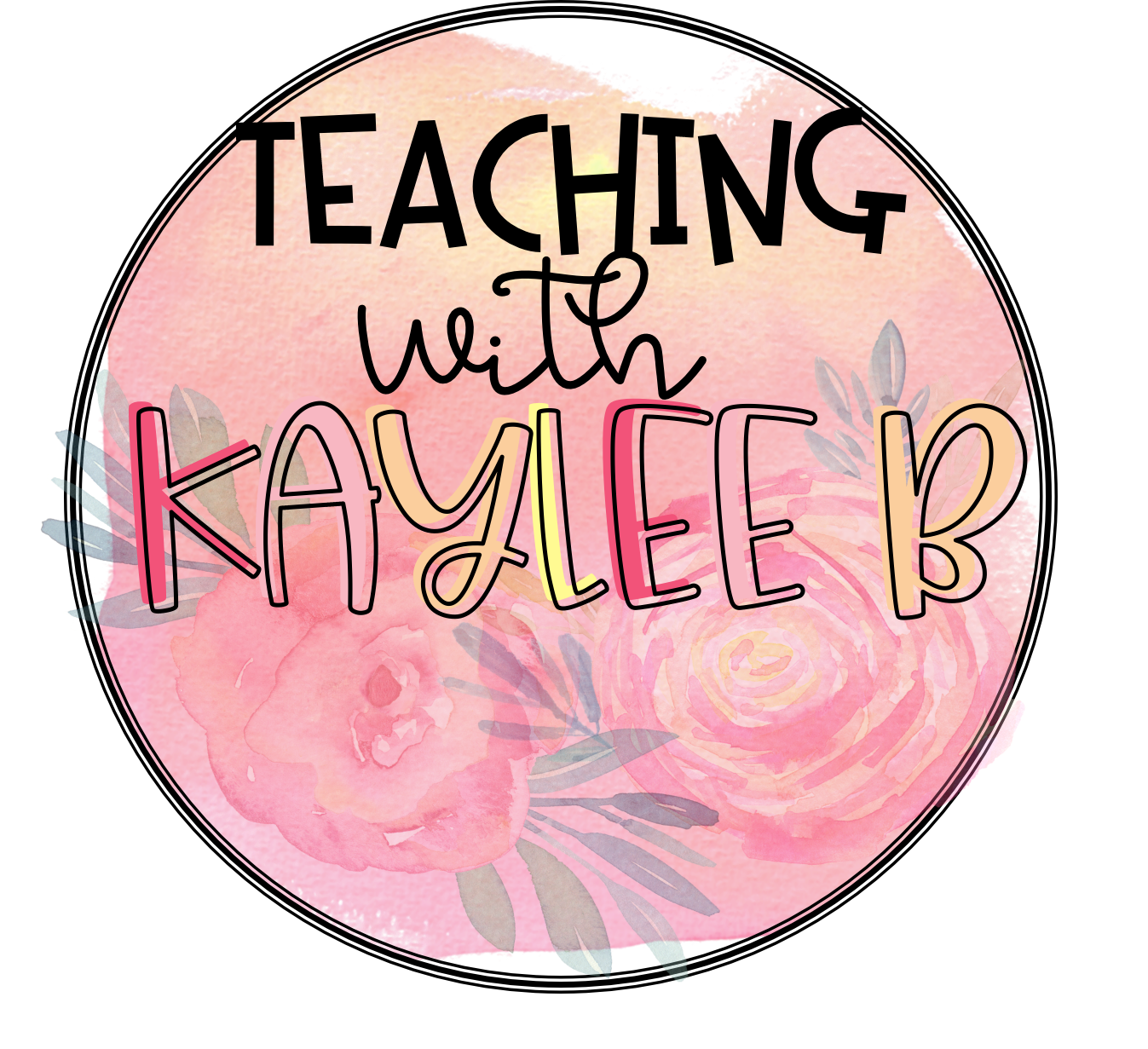I had a pivotal moment in my teaching career that made me learn how to teach math effectively.
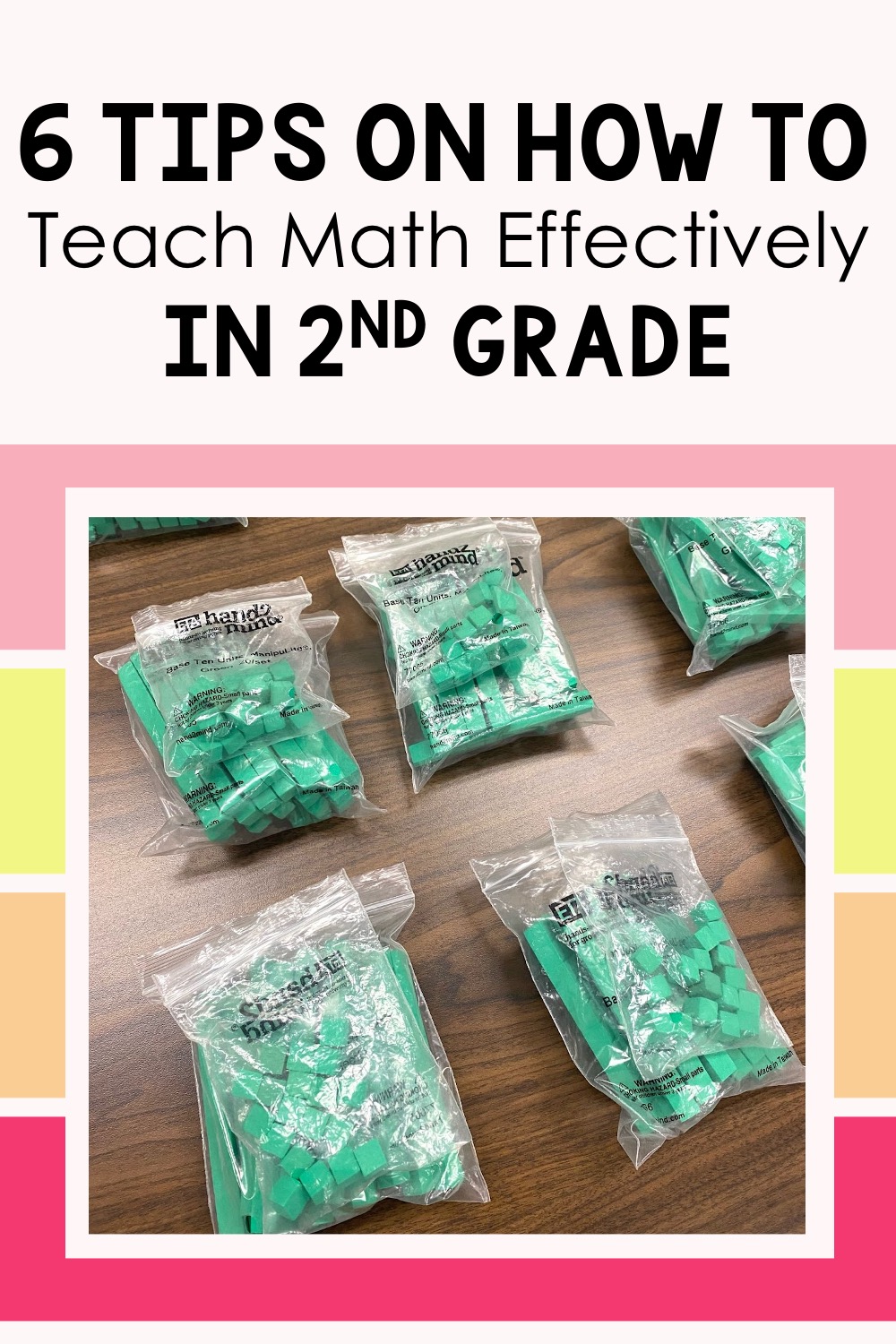
Learn how to teach math effectively by making some small adjustments in your teaching techniques.
The lesson was on subtraction on an open number line, and I had just finished the direct instruction part of the lesson. I sent my students off to try it themselves. Moments later, half the class had their hands up needing help. I rushed from desk to desk, watching as erasers scrubbed away messy work and frustration spread. Some students even started to cry. The lesson was a disaster. And the truth was, many of my math lessons felt that way.
Thankfully, our district gave us the opportunity to observe other teachers. I watched a veteran teacher run a calm, focused math block where students knew exactly how to get help—and it worked. That day, I realized that effective math instruction isn’t just about what you teach, but how you support students while they’re learning.
That moment sparked a transformation in my teaching. I began adding simple, consistent systems of support into my math lessons, and the results were incredible. My students went from struggling through every assignment to showing real confidence and growth. Some students even jumped from 3% on the pre-test to over 80% on the end of year post-test.
Maybe you have felt like me where your math lessons feel like chaos because so many students need one-on-one help. Or maybe you’re feeling frustrated because no matter what you do, it seems like students just don’t retain the math concepts and skills you are teaching them.
If so, this blog post is just for you. I’m going to be explaining the systems and strategies I implemented in my 2nd grade math lessons that made my teaching effective math instruction.
So, here are my 6 best tips on how to teach math effectively in 2nd grade. Don’t teach 2nd grade? That’s okay, you can still apply these tips to how to teach elementary math effectively. I will just be showing examples from my 2nd grade classroom.
How to Teach Math Effectively
- Model the Skills Clearly With Hands-On Tools
This is where you show students how to do the math skills you are teaching. I like to do this in a way that is very visual and hands-on for students. For example, if I am teaching regrouping, I am using magnetic base ten blocks that I can move around on the board in order to solve.
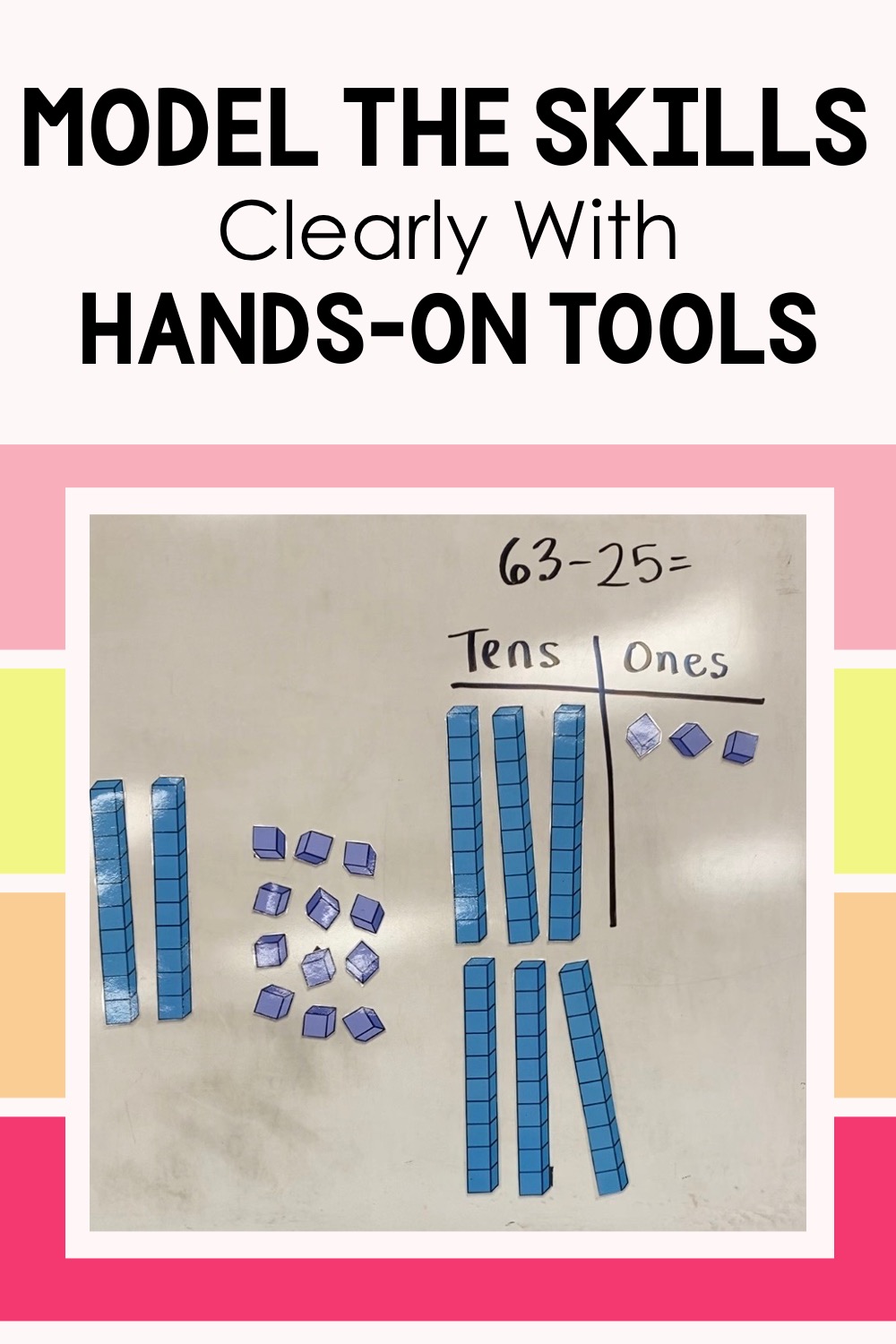
When it comes to how to teach math to elementary students, make sure to make these very visual and hands-on.
Or if I am teaching how to count coins, I am using big coin cutouts where I can move them around and show students that starting with the greatest valued coin and counting on is the easiest way to count coins. Learn more on how I teach regrouping here and counting coins here.
To make things easier on me when I am modeling skills, I made display pages for each 2nd grade math topic. These guide me through the lesson, show visuals as I teach, and give me plenty of examples that we can work together as a class.
After modeling a couple problems, I’ll get students more involved by asking questions and having them help me. I love how this gets things more interactive!
But modeling the skills is not enough to set students up for success with learning essential math skills. For more effective math teaching practices, make sure to pre-teach mental math skills that are involved in that day’s lesson.
How to Teach Mental Math
- Pre-teach the Mental Math Skills
Before I teach a lesson, I look at it and think about what mental math skills students need to know in order to do the lesson. I teach those mental math skills in a way where students discover them. Let me show you how to do this with the example of teaching 3-digit subtraction on an open number line.
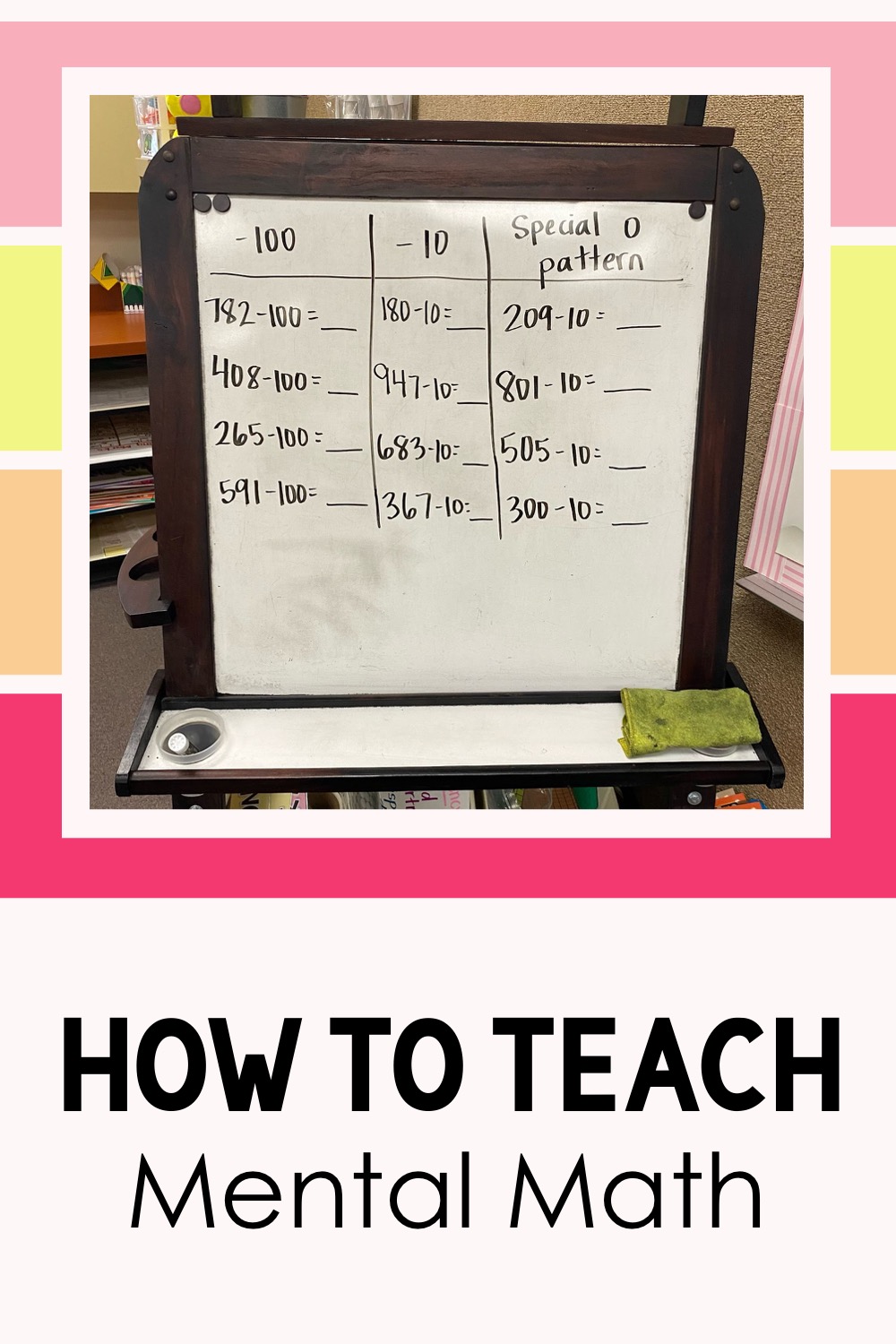
Wondering how to teach mental math? List out equations and ask students what patterns they see. This helps students discover those mental math skills.
As I look at the strategy, I see that students need to be able to mentally subtract 100 and 10 from a number. So I write up a bunch of equations where you subtract 100 and 10 from different 3-digit numbers. As a class, we solve those together using base ten blocks. Then I simply ask students, “what patterns do you see?” Students are able to see that when you subtract 100 from a number, the number in the hundreds place decreases by 1. And students see that when they subtract 10 from a number, the number in the tens place decreases by one.
Since students helped to discover these patterns, they remember them better. That means they turn them quickly into mental math skills.
Then when you model using the strategy, you can show students where these mental math skills plug in. Learn more about how I teach 3-digit subtraction on an open number line here.
Want more help teaching the mental math skills to teach 3-digit addition subtraction strategy? Download my free guide outline every skill for each strategy here.
When trying to improve your math instruction, learning how to teach mental math is key.
- Teach Related Math Vocabulary
It’s easy for students to have misconceptions about different math concepts in 2nd grade. To help eliminate these misconceptions from the get-go, it’s important to explicitly teach related math vocabulary words for the lesson.
I do this in a quick and easy way by using Math Vocabulary Cards. I show my students the card, we read the definition, and then we discuss the example on the card. Then I’ll display these up on the board for that lesson.
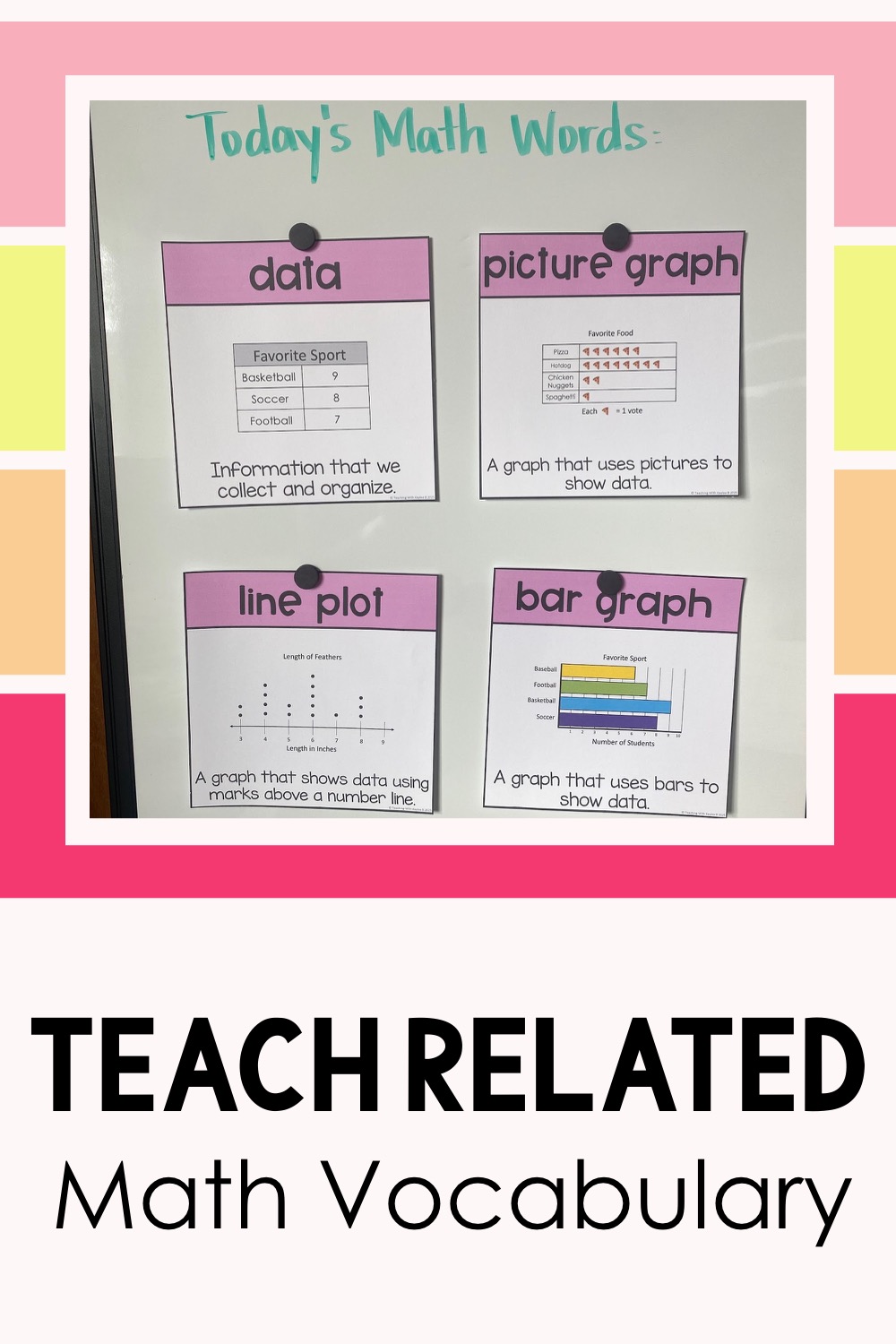
On the subject of how to teach basic math concepts, you can teach simple math concepts easily with math vocabulary cards.
If we have time, I’ll get students more interactive practice with these words by having them fill out different graphic organizers for words. When students understand these words, they are better able to explain their thinking. They understand the concepts and it eliminates many misconceptions.
Learn more about how I teach vocabulary in math in this blog post here.
Once we go over those words, pre-teach the mental math skills, and model the math concept for the day, it’s time to get students their own practice. When students get their own practice, it’s important that they get immediate feedback.
- Use Immediate Feedback to Reinforce Understanding
For guided practice I give students a worksheet. We do a couple problems together, and then I let students do the rest by themselves. I walk around the desks and monitor students. I’m helping where needed and taking note of common mistakes. Then I’ll call the students’ attention back and go over some examples and nonexamples to help students avoid those mistakes.
After that, they are ready for independent practice. I give students another worksheet over the day’s math topic and then simply go and sit at our classroom table.
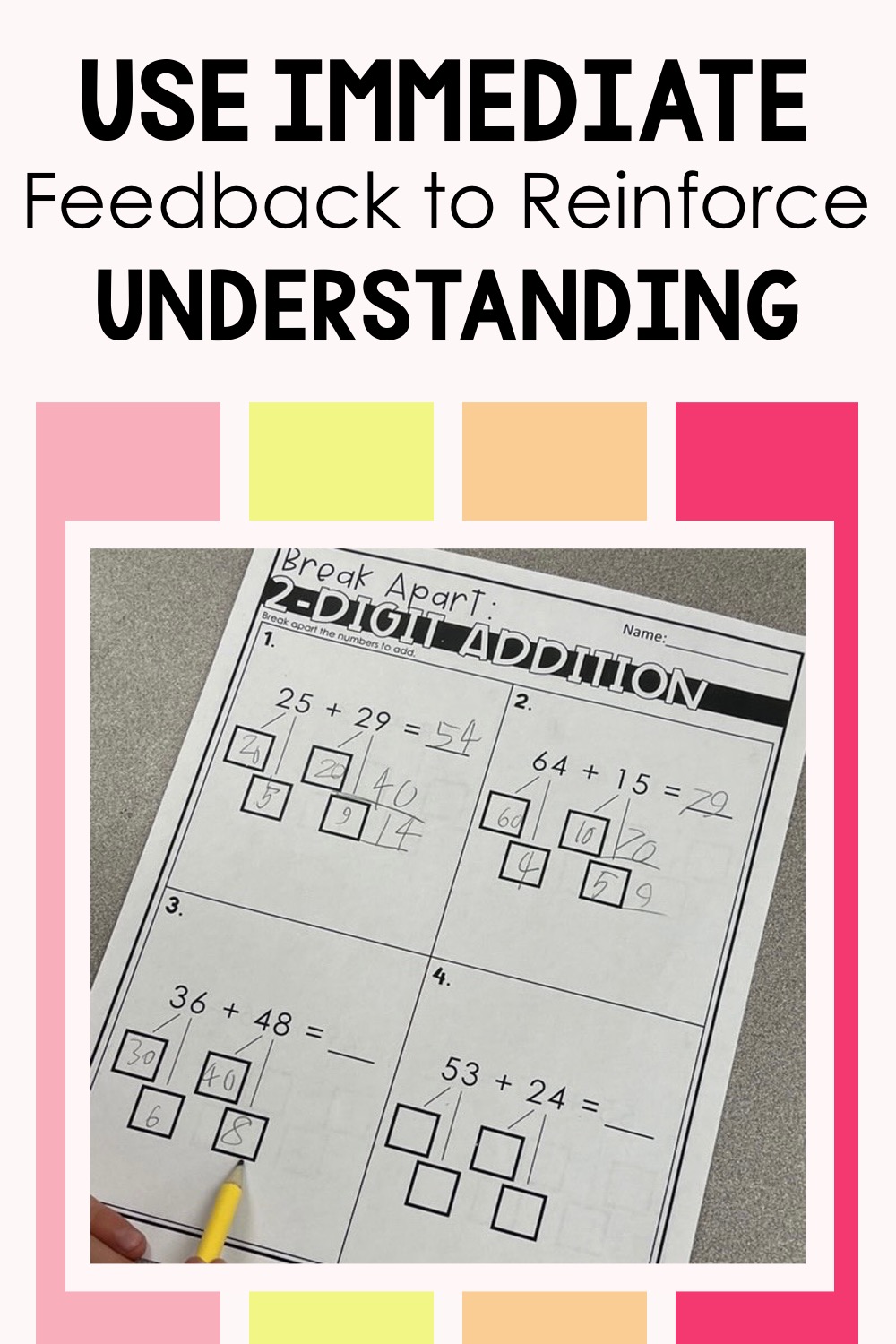
Want to give effective math instruction? Make sure you give your students immediate feedback during guided practice and independent practice.
As students finish their work, they line up by me. I do a quick check over their work. If they make a mistake I might write a couple notes to help them and have them go back to their desk and try again. Once students’ work looks good, I give them a big check mark with a smelly marker. This acts as a reward and also a signal that they finished their assignment. They put their page in their Take Home Folder.
If students need help during this independent work time, they take a seat at our classroom table. I go back and forth checking students’ work and helping those at my table. This allows me to give one-on-one support in a manageable way! I’ve noticed that when I stack my lessons with these effective math lesson strategies and supports, only a couple students need help.
There’s less overwhelm for me and my students!
I love this system to check work because it’s a win-win-win situation. It’s a win for teachers because we don’t have to correct these pages after school. This system is a win for students because they get immediate feedback, improving their understanding on the topic. And it’s a win for parents because they get to see how their child did on the math lesson that evening.
Ready to make your guided and independent practice more effective? Use the scaffolded worksheets I use for teaching each 2nd grade math topic here.
- Provide Engaging Partner Work
I like to get students even more practice with the day’s lesson by having them do partner work. This is important because students are able to support each other but it also gets them talking out loud about the math, solidifying their understanding. There are 2 partner work activities that both my students and I love.
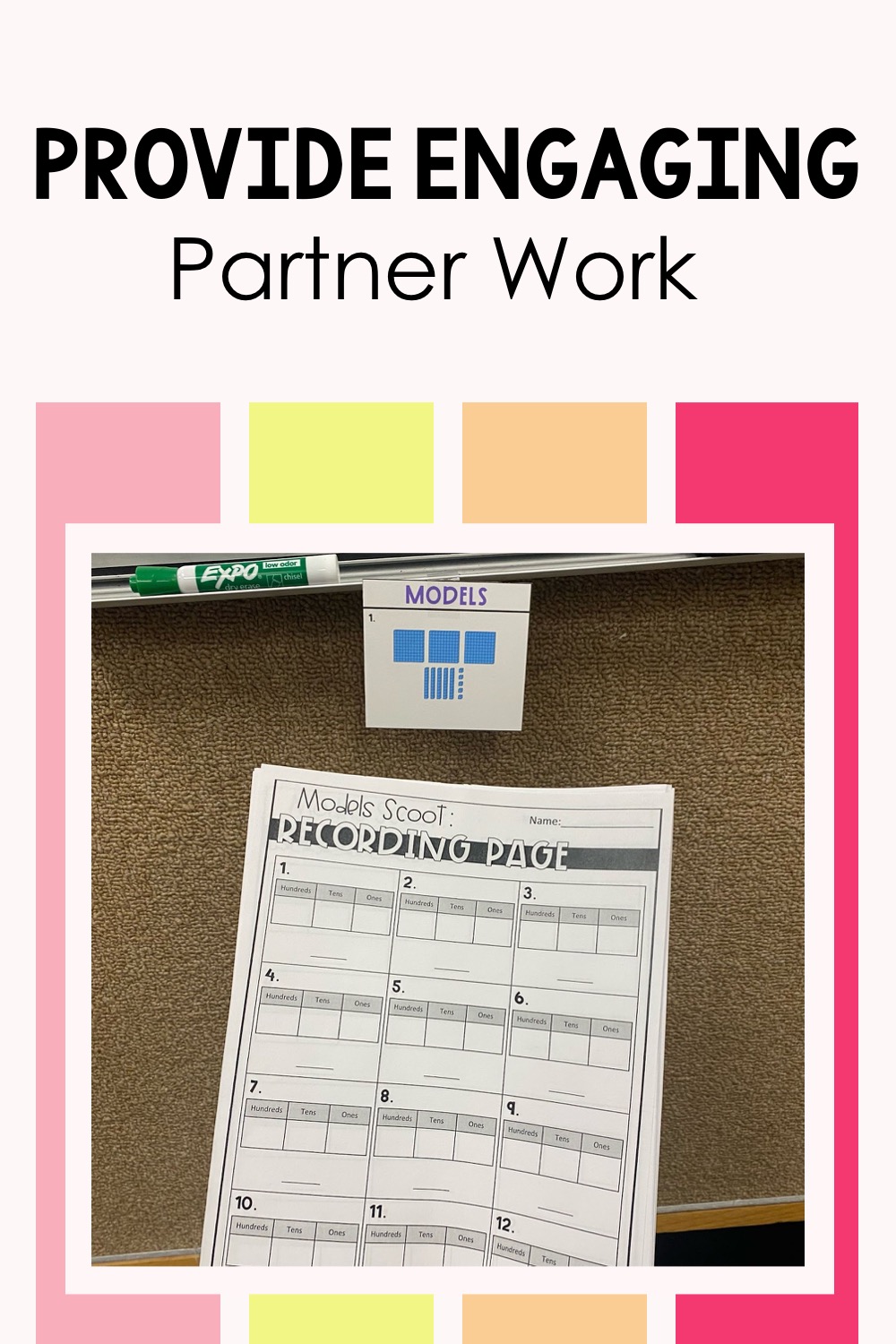
Want to have an effective math lesson? Give students plenty of extra practice activities.
The first one is scoot activities. This is where I tape up task cards around my classroom. Students take their recording sheet and go around to the different task cards. They answer the questions on the cards together. Students love how this gets them up out of their seats and moving. After they finish, I have students check their own work with an answer key I have set out. This gives them immediate feedback and allows them to fix their mistakes.
The other partner work I give are math puzzles. Students work with their partner to line up numbers and equations to practice the skill they learned in the lesson. These are really interactive and engaging for students. This gives students the meaningful extra practice they need.
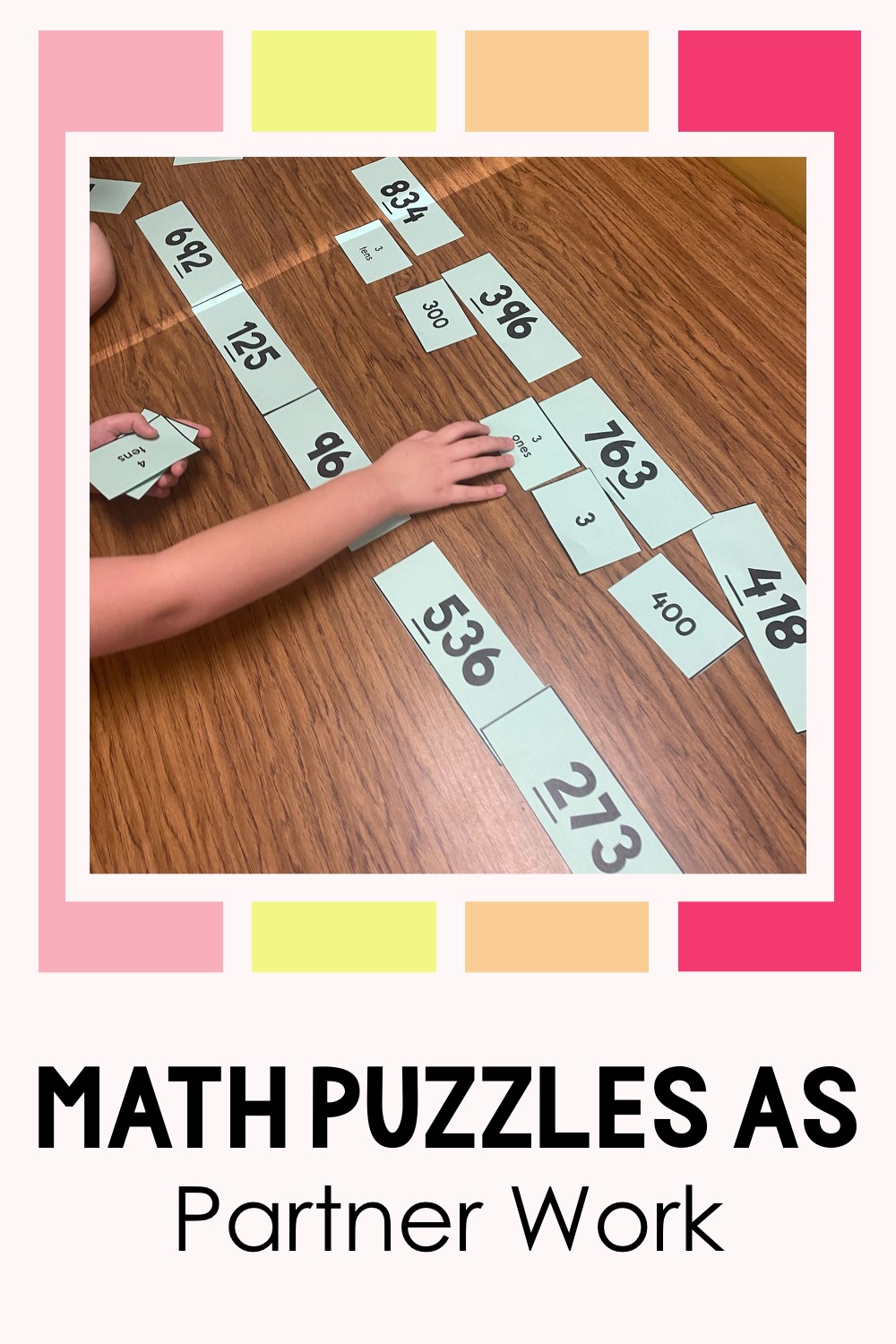
Effective math teaching practices include giving your students partner work.
I include scoot activities and puzzles in each of my 2nd grade math resources. Find these resources here.
Now you can’t just stop there. You have just put in so much time and energy into teaching students that math lesson. You don’t want them to forget those concepts and skills. So, as part of my tips on how to teach math effectively make sure you review daily. I like to do this in a simple way by making math anchor charts with my students.
- Make Anchor Charts as a Review
The next day, as our math warm-up I’ll make an anchor chart with my students. Before school, I’ll get the outline ready. But only the outline, because my students help me do the rest. They walk me through the skills they learned the previous day.
If I just taught 2-digit subtraction with regrouping the day before, I would create an anchor chart outline by writing the title “regrouping” up at the top. Then I would draw a tens and ones chart for drawing base ten blocks. And then I would draw a tens and ones chart for the numbers and include regrouping boxes in this chart.
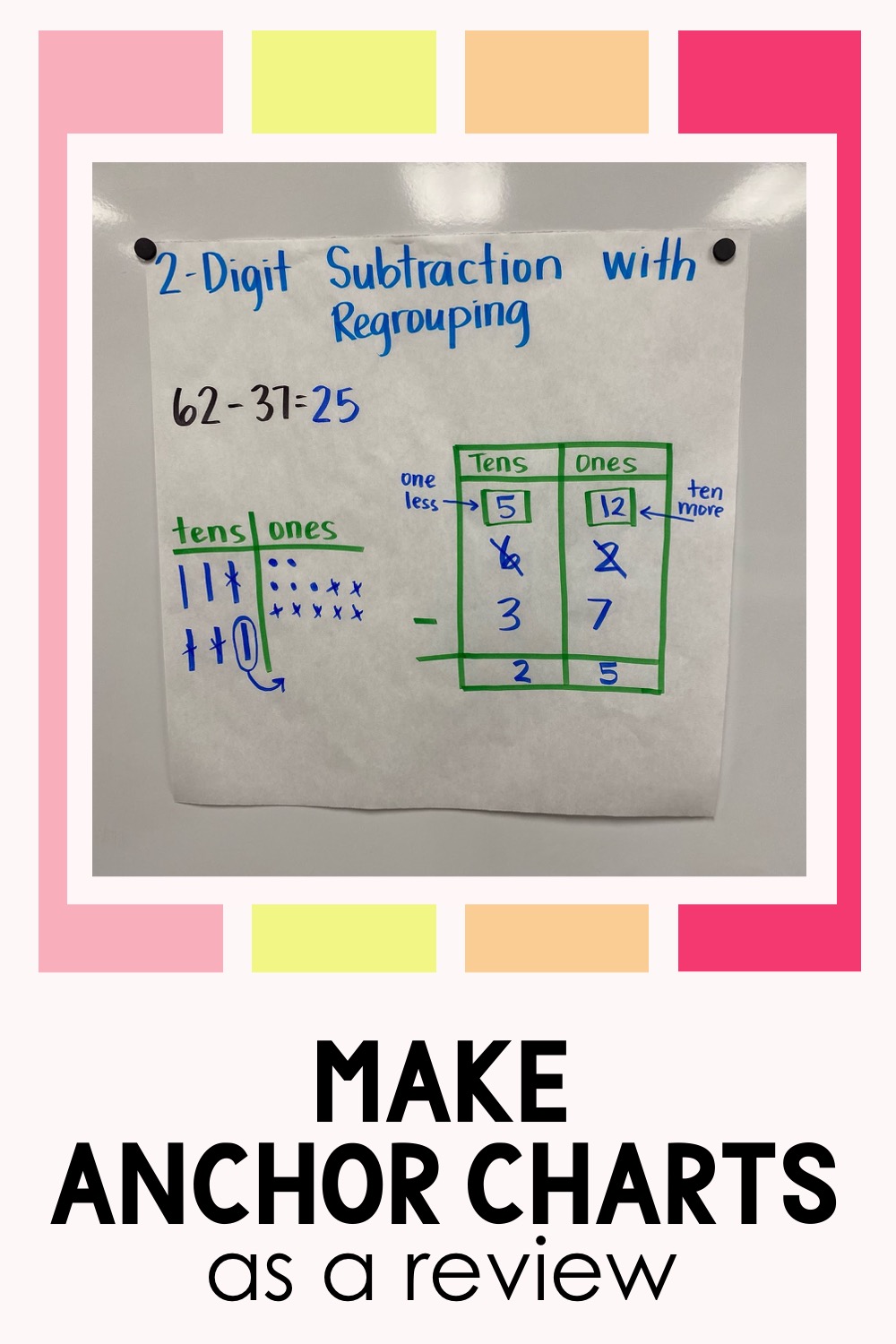
When it comes to how to teach elementary math, make anchor charts with your students. They can be a great review and they are super powerful when you make them with your students.
I would post this up on the board and then tell students, “Yesterday we learned how to regroup. We can do this by drawing base ten blocks. Here is our equation, who would like to get us started with what to do for this.”
I call on a student and I write or draw what they tell me to. It helps to just have students give you one step at a time so that you can call on multiple students and get more student engagement.
Then I would do the same with lining up the numbers portion of the chart.
Reviewing the concepts helps solidify things for students. It gets them a little more practice, and as a result, it helps them retain things better.
I then like to display these anchor charts in my classroom so students can refer to them when they need more help.
Want more examples on how to make anchor charts with your students? Read this blog post here.
To make things easier when making these anchor charts with your students, use my printable anchor charts. They will help you know what to include for each 2nd grade math topic. Find these printable anchor charts here.
Effective Math Instruction
So… Are you ready to give effective math instruction? Apply these 6 tips on how to effectively teach math to your 2nd grade students. You’ll quickly watch them thrive in math and your math lessons will become some of your favorite lessons to teach.
Let’s do a quick recap of these effective math instruction strategies:
- Model the skills
- Pre-teach the mental math skills
- Teach related math vocabulary
- Give immediate feedback
- Provide partner work
- Make anchor charts as a review
Ready to transform your math instruction? These printable 2nd grade math resources—anchor charts, scaffolded worksheets, and hands-on partner activities—are designed to make your lessons more effective and your students more confident. Grab them here and watch your math block become the best part of your day!
I hope this blog post has shown you how to teach math effectively. These were examples from my 2nd grade classroom, but they work for how to teach math to elementary students as well. So apply them and watch your math instruction become more powerful and effective.
As an Amazon Affiliate I earn from qualifying purchases.
